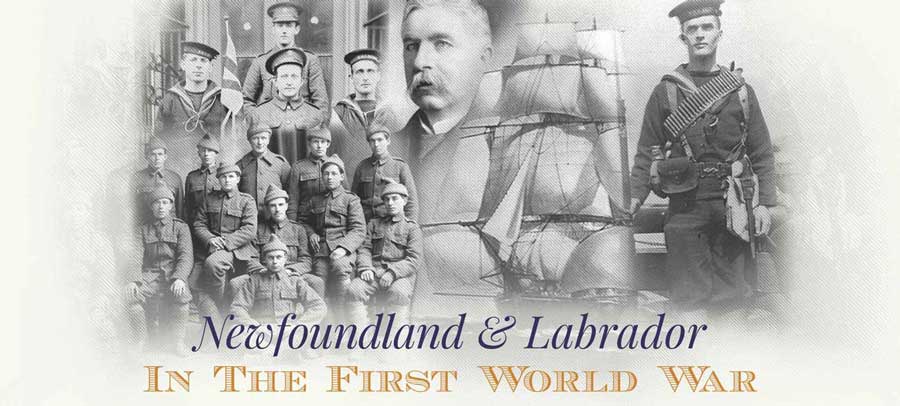Other Battles: 1916-1917
After the Battle of Beaumont Hamel on July 1, 1916, the Newfoundland Regiment needed to rebuild. A draft of 127 reinforcements arrived on July 11, which brought the unit up to 260 men and 11 officers. More drafts followed in the coming months, but it was a slow process - the Regiment would not number 800 men until December 1916.
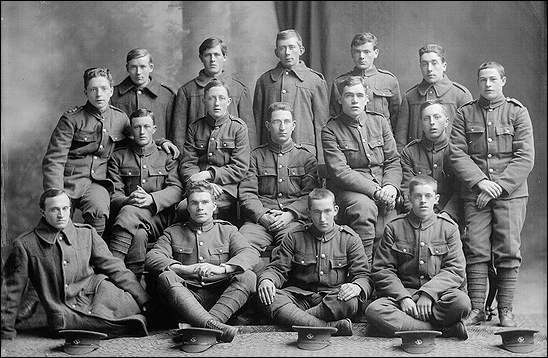
Courtesy of the Rooms Provincial Archives Division, St. John's, NL.
In the meantime, it alternated between serving on the front line and in reserve positions. From July 14-17, 1916 the Regiment did a brief tour of duty on the front lines near Auchonvillers, about 2 kilometres west of Beaumont Hamel. It then spent two months at Ypres, Belgium, where it dug and repaired trenches and accepted additional drafts of new recruits. While there, the Regiment came under its first attack by German cloud gas on August 8. Fortunately, the men were equipped with gas masks - which the Regiment's own Major Cluny Macpherson had helped to invent - and came through the assault without a single casualty.
Gueudecourt
On October 5, 1916, the Regiment departed Belgium for northern France. The Battle of the Somme, which had begun on July 1, was still not over and Allied leaders once again needed the Newfoundland Regiment on the front line, this time near the village of Gueudecourt, about 16 kilometres east of Beaumont Hamel. Its assignment was to take possession of Hilt Trench, a German stronghold, which lay just 400 metres from the British front lines.
The attack began at precisely 2:05 pm on October 12, 1916. As the men of the Newfoundland Regiment left their trenches, they encountered a devastating barrage of enemy fire. Captain Bertram Butler later wrote about the offensive for The Veteran magazine:
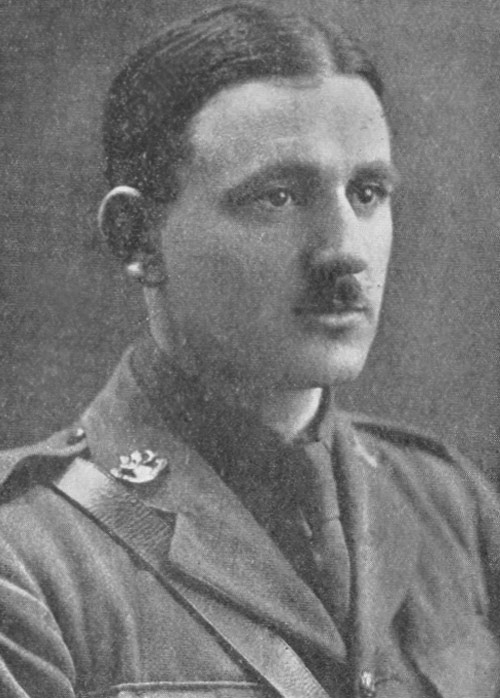
Courtesy of the Rooms Provincial Archives Division (VA 40-13.2), St. John's, NL.
"Although our attack was only on a front of about three hundred yards, it was impossible for one who took part in it to see what went on, except in his immediate vicinity. One platoon of B Company was practically wiped out, but the one on its right hardly had a casualty until we reached the German line. A Company had extremely hard luck, losing all its officers before they were nearly across; the NCO's took up the commands, however, and pushed the attack home. All ranks were eager to avenge as far as possible our comrades who fell on July first." (11)
When the men finally made it to Hilt Trench, they had to engage in close-range combat with the Germans. Many had not used their bayonets outside of training exercises, but they prevailed despite their inexperience - by 2:30 p.m., the Germans had surrendered and the Newfoundland Regiment was in control of Hilt Trench. It was an important success, but it came at a terrible cost: 120 of the Regiment's men were killed in the attack and 119 wounded. The Newfoundland Regiment maintained control of Hilt Trench until 3:00 the following morning, when another Allied unit relieved it.
Le Transloy and Sailly-Saillisel
The Regiment spent the next few months alternating between the front lines, reserve trenches, and rest camps.
On January 27, 1917, it took part in a surprise attack against the Germans near Le Transloy in northern France. The battle was a victory for the British forces, who took 368 German prisoners, including 72 captured by the Newfoundland Regiment's Sergeant Major Cyril Gardner. As a result of his actions, Gardner received a Bar to the Distinguished Conduct Medal he had previously won at Gueudecourt.
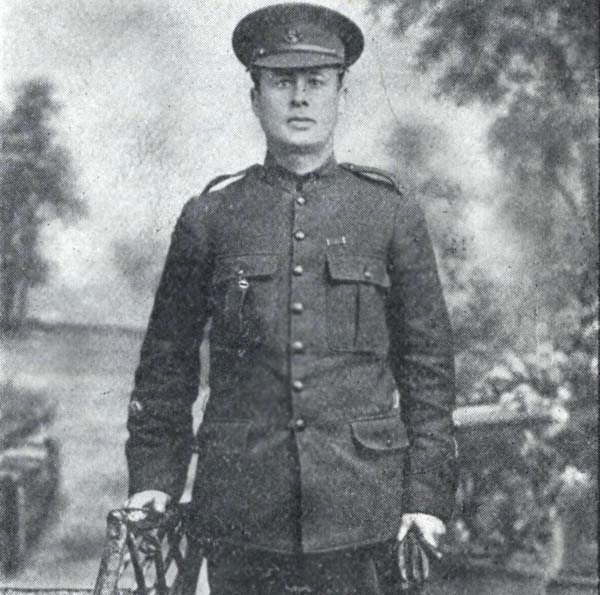
Newfoundland Quarterly 17.1 (1917): 11.
The Regiment participated in another battle from March 2-3, 1917, this time near the French village of Sailly-Saillisel. Temporarily attached to the British 86th Brigade, it helped to fend off attacking Germans and capture enemy trenches. Although the operation was a success, the Regiment lost 71 men: 27 were killed and 44 wounded.
The Battle of Arras
Its next major engagement was in the Battle of Arras. On April 11, 1917, British forces had seized the French village of Monchy le Preux from German control. The Newfoundland Regiment was part of a subsequent plan to drive German forces from the surrounding land.
Allied commanders ordered the 88th Brigade, which included the Newfoundland and Essex Regiments, to capture a German trench located just east of Monchy le Preux, and then secure Infantry Hill, which lay about 900 metres outside the village. The hill was strategically important because of the extensive view it provided of the region.
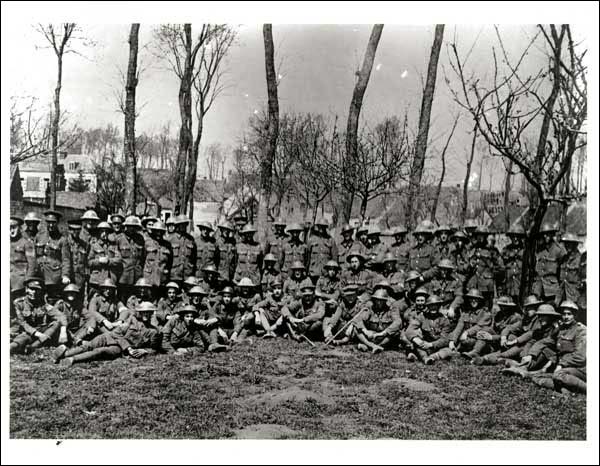
Courtesy of the Imperial War Museums (© IWM, Q 5344) London, England. www.iwm.org.uk/collections/item/object/205237485
Zero hour was set for 5:30 a.m. on April 14, 1917. Within two hours, the Regiment had captured both of its objectives and with only a relatively small number of casualties. However, the Germans launched a fierce counter attack, which cut off the Newfoundland Regiment's C and D Companies from the rest of the Allied troops. Surrounded and greatly outnumbered, the men sustained heavy casualties and were forced to surrender.
At Battalion Headquarters, the Newfoundland Regiment's commanding officer, Lt. Col. James Forbes-Robertson, ordered a scout to go forward and observe the situation. He returned with upsetting news: not a single unwounded man from the Newfoundland Regiment existed east of Monchy le Preux and about 200 or 300 German troops were advancing towards the village. If the Allies lost control of Monchy le Preux, it would be a devastating loss.
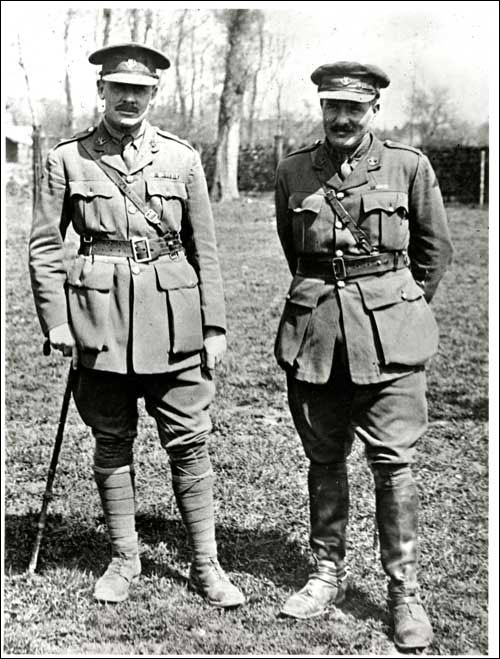
Courtesy of the Rooms Provincial Archives Division (VA 157-10), St. John's, NL.
Forbes-Robertson quickly assembled 21 soldiers from the Newfoundland and Essex Regiments who were still able to fight and led them to a trench near the edge of town, where they stood the best chance of holding off the Germans until reinforcements arrived. To reach the trench, however, the men had to cross about 100 metres of open ground, which was in full sight of the Germans. They made their advance under a hail of enemy fire and only nine of the men reached their target. They were later joined by a tenth soldier, who had been struck by a bursting shell that rendered him temporarily unconscious. The men opened fire on the Germans at about 10:50 a.m.
The Monchy Ten
All that stood between Monchy le Preux and the more than 200 advancing Germans were nine Newfoundlanders and one man from the Essex Regiment. Among them was Private Fred Curran, who later wrote about that day for The Veteran: "We opened fire on the Germans immediately and, I suppose, we successfully created the delusion that we were a large invincible army, because they made no strong attack. Then suddenly, our ammunition gave out. On no man's land were machine gun carriers lying among the dead men and debris, and we got enough ammunition to keep up a continuous firing for over an hour" (56).
By the time reinforcements finally arrived at 8:00 that evening, the village had been saved and the men who protected it became forever known the Monchy Ten. Allied commanders later estimated that if the Germans had captured the village, it would have taken about 40,000 troops to reclaim it.
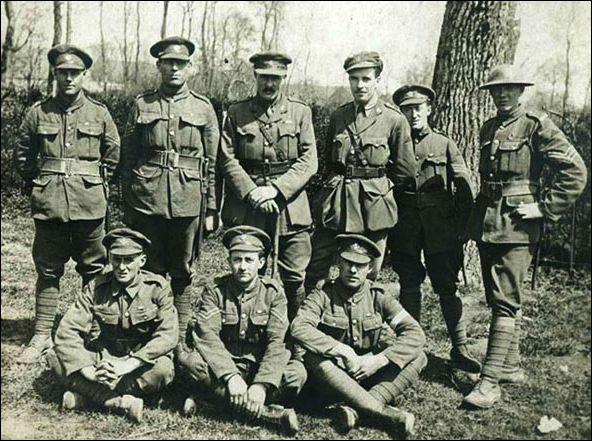
Courtesy of the Rooms Provincial Archives Division (VA 36-38.1), St. John's, NL.
It was a tremendous success, but it occurred alongside terrible loss. Reports of the casualties are conflicting, but the Newfoundland Regiment lost about 453 men from April 12 to 15 - 166 died, 134 were wounded, and the Germans took 153 prisoners, of whom 28 later died in captivity.
After Monchy le Preux, the Regiment was involved in one more operation at the Battle of Arras. On April 23, it helped to guard a portion of the front line on the Arras-Cambrai road immediately south of Monchy. The area came under intense enemy fire and an already depleted Newfoundland Regiment sustained further casualties - 13 men killed and 48 wounded.
It then entered a well-deserved period of rest and recuperation. Reinforcements occasionally arrived from Newfoundland and Labrador, but it had become increasingly difficult for recruiters to keep the Regiment at full battalion strength. The dominion's population was small, and the war had taken its toll. Even the local cod fishery was struggling because of a shortage of workers. In the three months after Monchy le Preux, only 190 men volunteered for military service, and half of those were rejected on medical grounds.
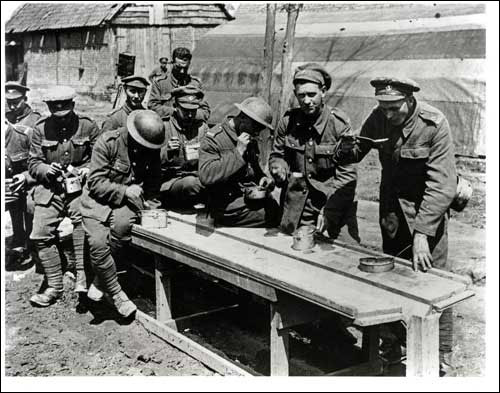
Courtesy of the Imperial War Museums (© IWM, Q 5341) London, England. www.iwm.org.uk/collections/item/object/205195986
Those who did make it overseas were soon advanced to the front lines. The Regiment fought at Belgium in July, and again in September and October. It returned to France in November to take part in the Battle of Cambrai.
The Battle of Cambrai
By then, the tactics of war were changing. The Germans were using mustard gas with greater regularity and tanks were becoming more common on the battleground. At the Battle of Cambrai, Allied forces used about 100 tanks. The Newfoundland Regiment had to train for weeks to learn how to advance on foot behind the rolling machines.
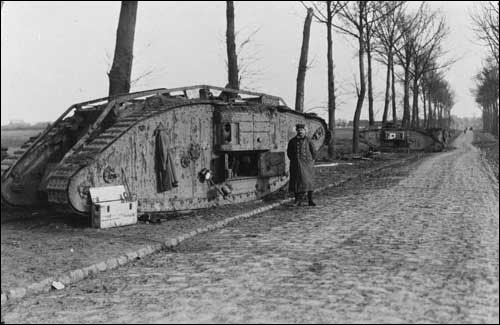
Courtesy of the Imperial War Museums (© IWM, Q 67594) London, England. www.iwm.org.uk/collections/item/object/205314861
The Allies launched their surprise attack on November 20, 1917. Cambrai was an important supply point for German troops, and Allied commanders hoped to capture it from enemy control. But to reach the area, troops first had to fight their way through 10 kilometres of German-controlled territory.
The Newfoundland Regiment's assignment was to advance behind the first waves of attackers and capture the St. Quentin Canal and the town of Masnières. Other Allied troops would follow behind and push on to Cambrai.
The Newfoundland Regiment had secured its first objective by 1:30 p.m. and then proceeded to Masnières. It fought all night to rid the town of German troops, which by morning was almost entirely under Allied control. Reinforcements relieved the Regiment at 2 a.m. on November 22. The success did not come easily - 54 of the Regiment's men died in the two-day attack, and almost 200 more were wounded.
The Regiment had little time to rest before the Germans launched a powerful counterattack on November 30. The fighting lasted for days. Soldiers engaged in hand-to-hand combat and they were shelled repeatedly. Sixty five Newfoundlanders and Labradorians died before the Regiment withdrew at 9 p.m. on December 3. It proceeded to a rest camp at Humbercourt
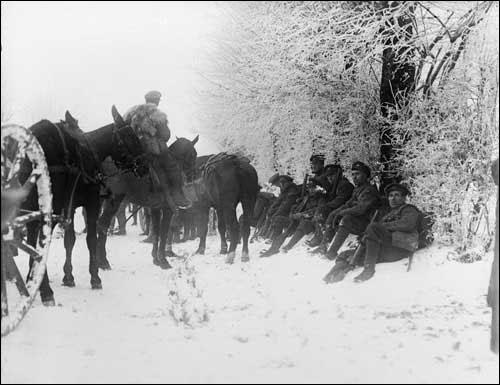
Courtesy of the Imperial War Museums (© IWM, Q 8353), London, England. www.iwm.org.uk/collections/item/object/205244232
By then, the Newfoundland Regiment had gained a reputation for its courage and tenacity. It had fought with distinction in several major battles and many of its men had earned medals for their acts of bravery. On December 17, 1917, King George V honoured the entire Regiment by bestowing the title of "Royal" to the unit. It was an award that no other British Regiment earned during the First World War, and it gave both the Regiment and the dominion of Newfoundland and Labrador a much-needed morale boost as 1917 came to a close.
